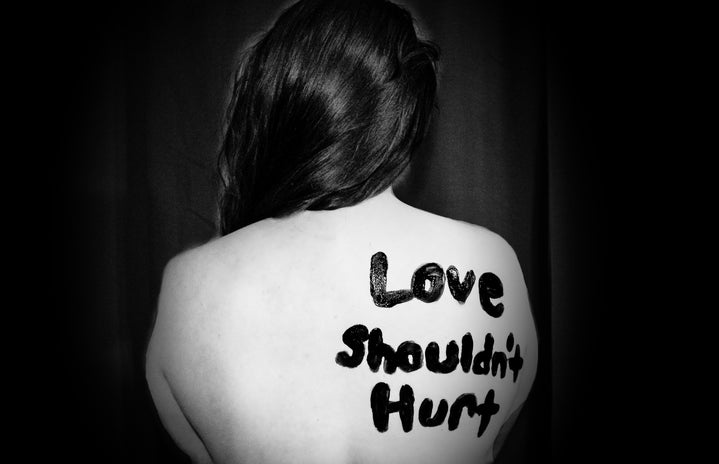Domestic abuse is a very real tragedy that happens far too often. Almost 10 million women, as well as men, are affected by domestic violence each year. Approximately 1 in 3 women (35.6%) in their lifetime will be subjected to assault, rape, stalking, or any other physical violence by an intimate partner. Men are also at risk; they make up about 28.5% of people affected, meaning 1 in 4 will have a partner that could possibly cause harm to them in one of the aforementioned ways .
Domestic violence is a serious matter that can sometimes be presented in many different ways, some being obvious and others much harder to identify. Signs that a loved one may be potentially experiencing this include bruising, frequent emergency room trips, making excuses for injuries that may not quite make sense, untreated injuries in various stages of healing, prolonged isolation from friends and family, and many changes in an individual’s manner, behavior, and/or health.
Some warning signs and symptoms to look out for in a relationship include, your partner having a short temper, quick to become jealous, unrealistic expectations (you or them being absolutely 100% perfect in every aspect), controlling every single thing that you do or affects you, forceful behavior physically or sexually, sudden mood swings, verbal abuse, and use of threats. There are many more signs to look out for, and this really depends on the suspected individual.
Luckily, there are now many resources to help survivors as well as spread awareness to this horrible occurrence. On any regular day, there are more than 20,000 phone calls being made to hotlines nationwide. There are multiple hotlines, websites, and places you can go to protect yourself. Women’s shelters are places that you can go to escape someone who is causing serious harm to you or others. They help you get out of a dangerous situation discreetly and take care of you until you get back onto your feet. These shelters will give you a place to sleep, they’ll give you something to eat, and they will also get you the help you need whether that’s medical attention, therapy, or both. The shelters will also do everything that they can in order to provide a job for them so that they can start saving money to move out and possibly go somewhere far away from the abuser. Women’s shelters can also try to provide child care, 1 in 15 children are exposed to intimate partner violence each year and almost 90% of these children are a witness to the abuse taking place.
October has been dedicated to spreading awareness on the issue of domestic violence, to make the survivors heard and give them the space to share their stories. These strong individuals want to make sure that we all know the warning signs and what to look out for, how to get out of a dangerous domestic situation if you are in one, who to turn to and where to get help. If you know someone who is facing abuse, physically or verbally, the safest thing you can do to help them is to simply be there for them. They may not want to report it, as a majority of these cases are rarely reported. Check in on them every once in a while, send your love to them in your own ways and make sure that they know you are there for them. All they need is to know that someone is listening to them and that someone truly cares about their wellbeing. Give them the strength to care for themselves and get out of this dangerous cycle.
If you or someone you know is a victim of domestic violence, call The National Domestic Violence Hotline at 1−800−799−7233 or visit their website to chat online 24/7.


